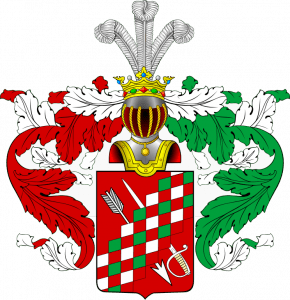Mezenovka. The remains of a sugar factory.
Type: Industrial object Kind: Historical (Inactive)
Country: Ukraine Region: Sumy region
Availability: Available for visits, Bad road (during any weather, can be driven by two-wheel drive cars) , Emergency condition
Mezenovka. The remains of a sugar factory.
The exact date of the village foundation is unknown. It is believed that this settlement near the Korova and Pozhnya rivers existed already in the middle of the 17th century.
Until the middle of the 17th century, Mezenovka was part of Volnovsky district of Belgorod province. And only in 1779 entered the Bogodukhov Commissioner. During that time village belonged to the brigadier Khitrovo and the widow of Mezentseva. The Mezentsov family led from Afanasy Mezentsov, who was the head warden in Kursk in 1623.
In 1800, a stone monastery of the Holy Trinity was built in Mezenovka at the expense of the landowner Apollinariy Tagarov.
And in 1848, Shabelskyskii built a sugar factory there, which became the first such enterprise in the Akhtyrsky district. It was destined to play an important role in the history and life of this locality for many years.
It should be noted that at the beginning – at the middle of the XIX century, the noble family of the Shabelskys was considered very wealthy in Slobozhanschyna. They owned lands not only in the Akhtyrsky, but also in the Kupyansky, Izyumsky, Lebedinsky and Starobelsky districts of the Kharkov province.
In 1861 Sophia Apollonovna Jellinskaya owned the Mezenovka. Population was
120 yards (407 men and 452 women), there were church, sugar and saltpetre plants.
In the 80s of the XIX century for the maintenance and expansion of the activities of the enterprise “Partnership Mezenovskogo sugar beet plant” was established.
The plant itself belonged to State Councilor Nikolai Nikolaevich Skvortsov, the board included Lev Izrailevich Brodsky, Aron Iosifovich Brodsky and Alexander Iosifovich Brodsky (managing director).
At the beginning of the twentieth century in the descriptions of the plant the presence of a hospital for workers for 6 beds is mentioned. Also free library-reading room acted in the village. The population of Mezenovka at the beginning of the twentieth century can be judged by the fact that in 1904 there were 1,144 male parishioners at the church, and 1,111 female.
However, looks like that the Mezen workers and peasants did not live very well during those days. During the revolutionary events of 1905-07, they were actively participating in the riots in the Akhtyrka district.
“In the Akhtyrsky district, a significant riot took place in the estate of Khrushchev. The peasants of the villages of Ryasnoy, Aleksandrovka, Novodmitrovka, Pushkarny and Mezenovka in the end of November smashed the outbuildings in the economy and demolished bread, fat, harness, wagons and sleds from the estate. ” (Source: N. Kh. Onatsky, “Peasant Revolutionary Movement on Sumy of 1905”; N. Kh. Onatsky, “1905 Year on Sumy: Collection of Scientific Articles” – Sumi: Plow and Hammer, 1930)
In the report of the assistant chief of the Kharkov provincial gendarme department to the director of the Police Department about the strike of the workers of the Mezenovsky sugar factory of the Akhtyrka district, we can read:
“September 27, 1905
At 2 o’clock in the morning from September 19 to September 20, workers at the Mezenovsky sugar beet plant of the Brodsky and Akhtyrsky Uyezd association, 400 people in total, stopped working and demanded the establishment of the third shift, threatening to cause unrest. The plant manager Yanchinsky, came to the workers, offering them an additional payment instead of the third shift, after which the workers began to work.
The order was not violated.”
However, apparently, the concessions of the owners still did not satisfy the workers. As early as January 1906, the Mezen economy was ruined and plundered by them. After these events, the composition of the plant itself changed. In the statue of the “Partnership Mezenovskogo beet sugar plant” for 1911 we can read:
“The Founders of the Partnership: Actual State Councilor Nikolai Nikolaevich Skvortsov, Belgian citizen, civil engineer Albert Gilien and French citizen Heinrich Mistral.”
On July 30, 1917, a local resident, Martynenko, who had escaped from the Graivoron prison, was convicted by his fellow villagers of stealing bread. The mobish over the thief, organized by the Mezen peasants and workers, was cruel and merciless. People began to hammer nails into the heels, from which he died.
At the end of September 1918, the Mezenovsky Plant, which at that time was already owned by the princes Putyatiny, was sold. New time and power made changes both in the life of the plant and its workers. Not a trace remains from the stone temple. New buildings were attached to the buildings of the old factory. Now there is desolation everywhere …
Author – Anton Bondarev, Source










